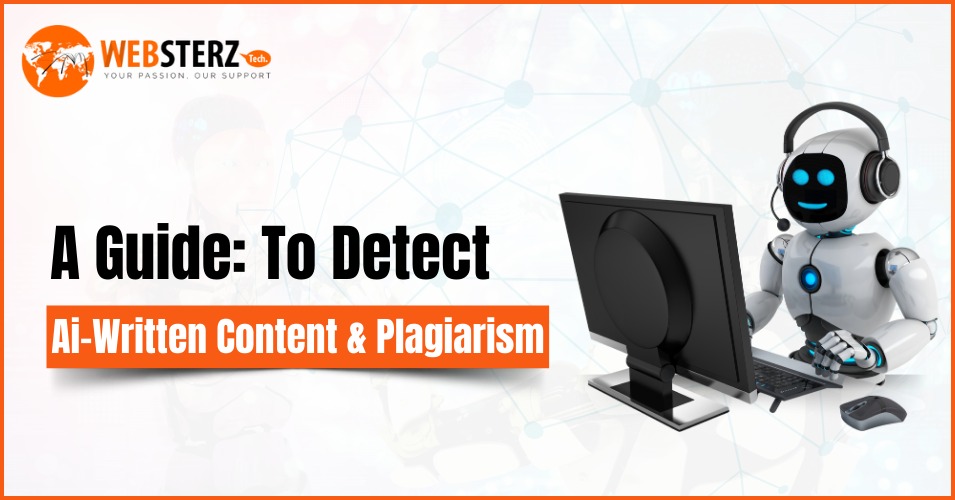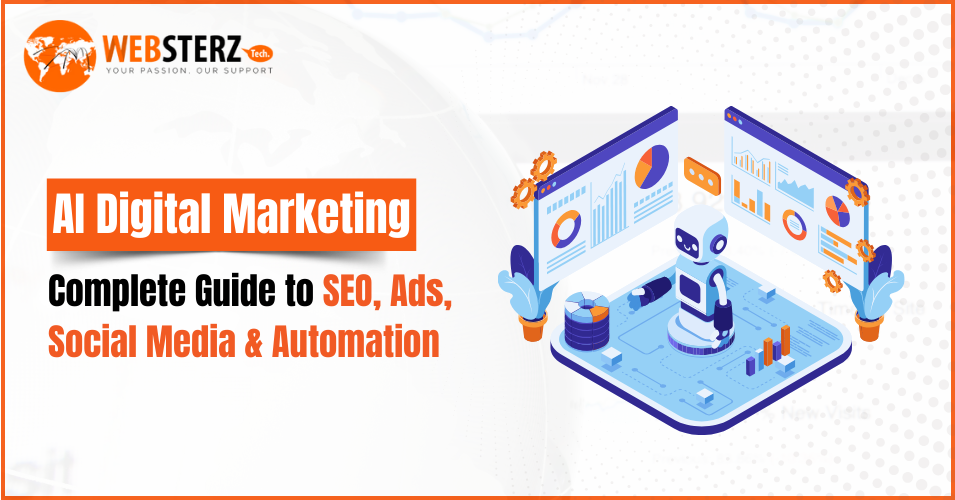In current days AI tools are widely used for content creation because they are fast and efficient. However, AI-written content often misses the creativity and subtle touch that human writing provides. If you have ever encountered AI-generated text, you might have noticed that AI-written text can feel predictable and generic.
Human writing tends to be more dynamic, with various narration and a more affluent choice of words. It’s also possible to have more typos than AI-written content- Human error, right? If you are an editor, or content marketer, it is essential to carefully review the content you are working with to ensure it meets your needs.
In this blog, we will learn how to identify AI-generated content and detect plagiarism. Here’s what you are going to learn:
- What AI content detection is and how it works
- Which tools you can use to detect AI-written content and to check plagiarism
- The 4 obvious signs of AI-generated text
What is AI content detection?
AI content detection is the process of determining whether a text was generated by AI or written by a human. With the rise of AI-generated articles, images, and videos, this type of content is becoming more common online. AI tools are being used extensively to speed up and improve creative processes like writing articles and making videos. Even though AI speeds up the process, human oversight is still needed to ensure the best quality.
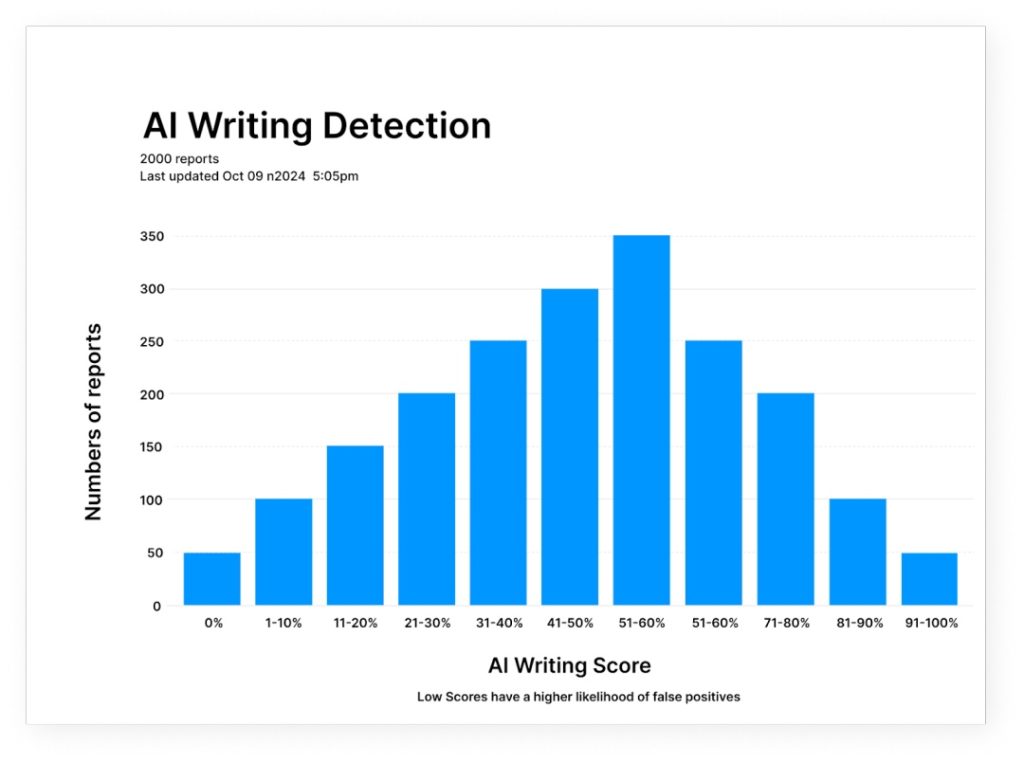
Why Does AI Content Detection Matter?
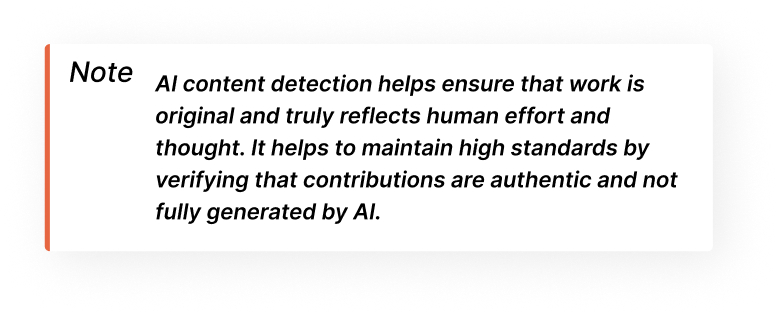
Academic institutions are still developing policies on how to handle AI content.
According to a study by Tyton Partners, an education industry advisor, most teachers are okay with using AI for brainstorming ideas, but they don’t support using AI to fully write text.
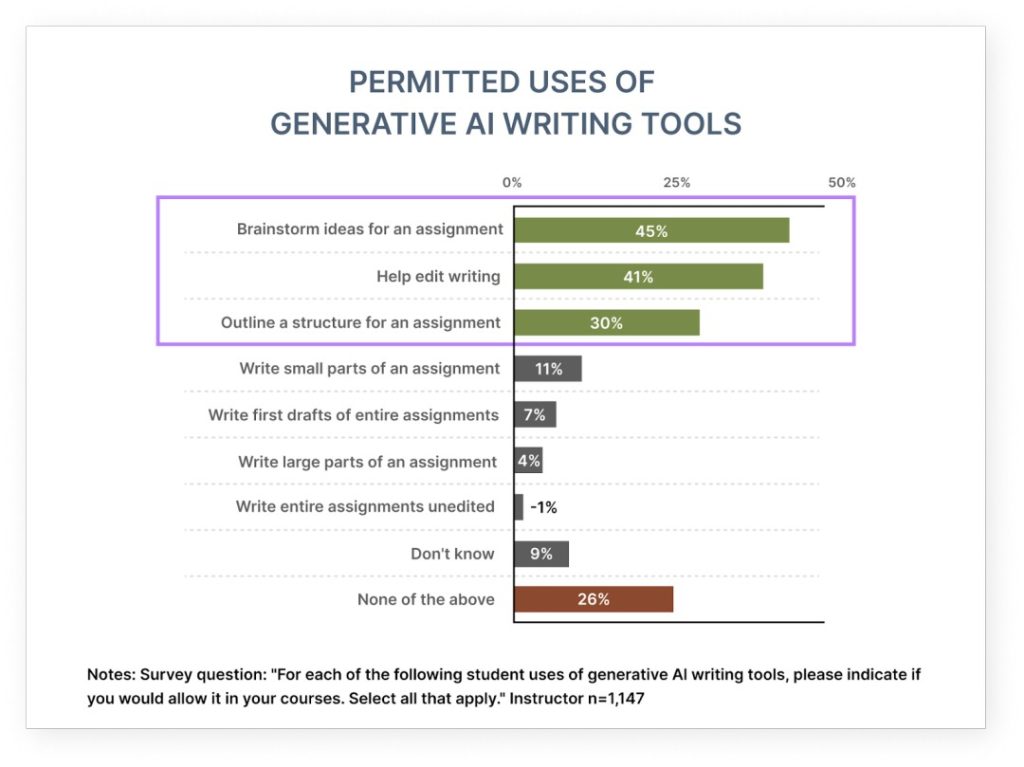
How to Detect Plagiarism and AI-generated Content
How can we tell if something was written by AI?
The easiest way is to use plagiarism checkers and AI detection tools. However, there are also some common signs of AI writing to look out for, such as:
- Incorrect or outdated information
- Lack of depth or personal touch
- No personal experiences or stories
- Repetitive language
1. Inaccurate facts and claims
AI-generated content can sometimes present inaccurate or outdated facts with confidence, which can be misleading and even dangerous, specifically in critical fields like healthcare and finance.
For example, an AI might confidently state that the best room temperature for sleep is 65 to 68 degrees Fahrenheit.

However, according to this article from WebMD, it suggests the ideal range is actually 60 to 68 degrees Fahrenheit. This slight but important difference shows how AI can make factual errors, even on something as simple as room temperature.
It’s always essential to cross-check AI-generated facts with trusted sources to ensure accuracy, particularly in areas where false information could have serious consequences.
2. Repetitive Language in AI Writing.
AI-generated content often uses the same words and phrases repeatedly.
AI models don’t have the human ability to recognize and avoid repeating themselves, so they may tell the same story multiple times without realizing it.
To spot AI-generated content, look for the repeated use of words and phrases.
For example, this snippet created with ChatGPT 4 is nicely written, but it says the same
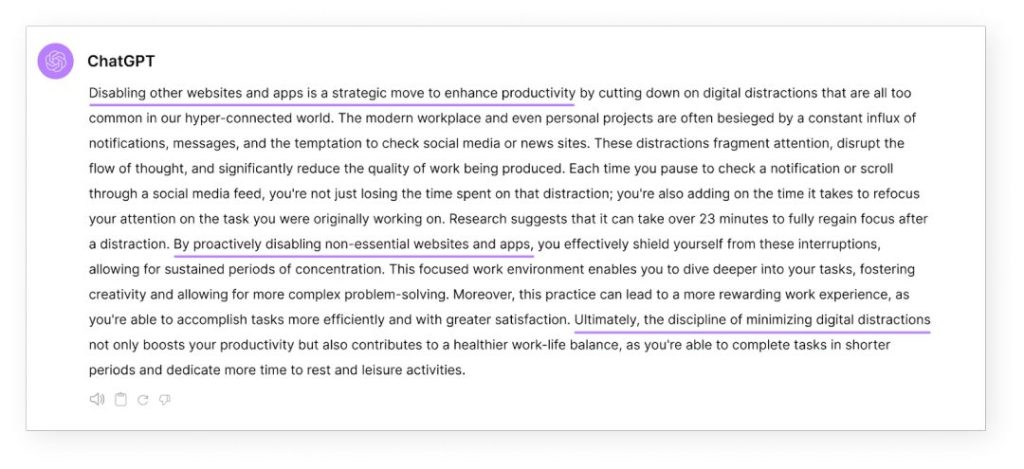
3. Lack of Depth and Personality
Real people have personal stories, opinions, and viewpoints that shape how they think and write.
Because AI tools don’t actually write but they generate text based on patterns from the data they were trained on. This means they don’t understand topics like humans do. It makes the text sound complicated and polished, but it’s actually just a collection of heavy words, not a meaningful article.
For example: Notice how important this article is about Nike’s new sneaker marketing strategy.
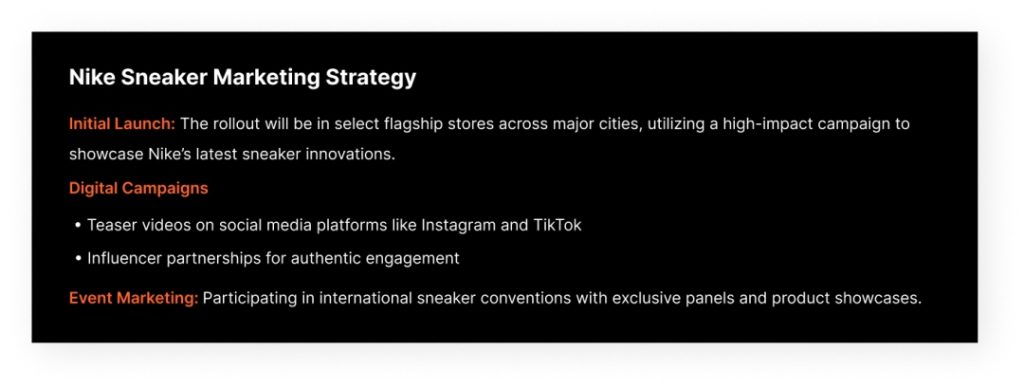
A human writer would include details like which stores or regions will get the product first. Human content would also highlight specific social media platforms or campaigns being used for marketing. In contrast, this AI writer just gives a broad overview without specific information about it.
But even more importantly, the AI doesn’t recognize that the sneaker launch event has been delayed.
4. Monotonous Tone
One of the most noticeable disadvantages of AI-generated content is its flat, monotonous tone. It often reads like a robot wrote it, which lacks the spark and personality you get from human writing. AI doesn’t add emotion or humor to its content. Instead of sounding lively and engaging, it often feels robotic and repetitive.
- They lack a unique style or personality in their writing.
- They don't use casual language.
- They don't use everyday phrases or slang.

Human writers naturally show their personality while writing. We make jokes and reference pop culture. Good human writers usually don’t sound boring or flat.
Take a look at this AI response to a simple question. A human writer wouldn’t share the same information in such a formal or stiff way. They wouldn’t use phrases like “emotionally resonant,” “adaptability,” or “vocal prowess.”

What Is Plagiarism Detection?
Unlike AI detection, which is still relatively new and developing, plagiarism detection has been around for a long time.
Plagiarism-checking tools were specially created to address increasing cases of copying in academics. These tools compare your text to a vast database of existing content from the web, research papers, magazines, journals, and publications to find if there are any matches between them.
Unlike AI detection tools, which search for predictable patterns in wording or sentence structure, plagiarism checkers focus on finding exact or close matches of keywords, phrases, and even full sentences.
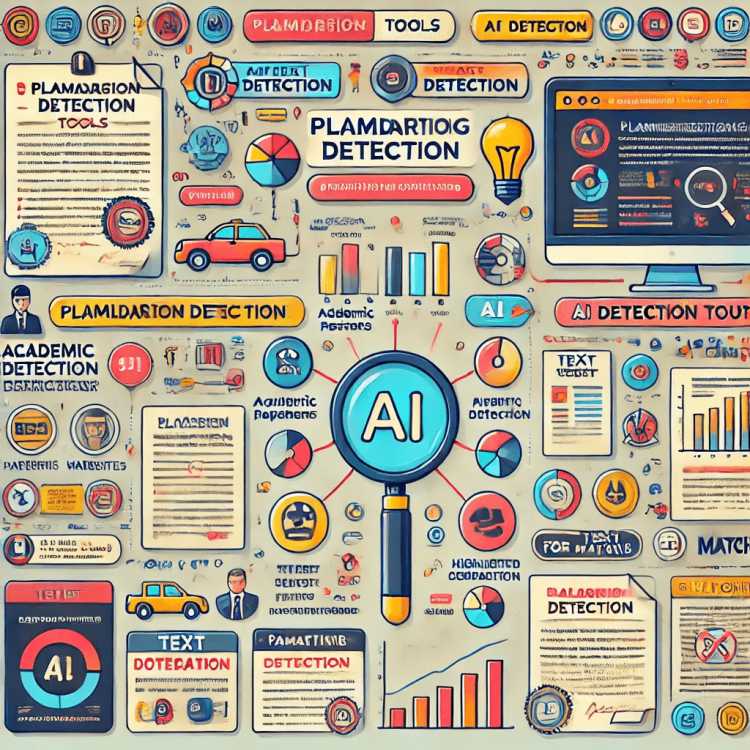
Most plagiarism checkers operate similarly, but their results can differ based on the databases they use.
Since the launch of ChatGPT, plagiarism checking has become increasingly important. AI-generated content isn’t technically plagiarism because it doesn’t copy text word for word, it can rephrase information it has learned. In these cases, a plagiarism checker might still flag this text as plagiarism.
Best AI Tools for Content Writing and Plagiarism Checking
You can also identify AI-generated text and plagiarism using specialized tools.
Although no tool is perfect, it can be very useful for quickly checking your writing and giving you a general idea of its originality.
Numerous AI writing detectors are designed to help you identify AI-written content such as:
A recent study from Cornell University showed that Copyleaks has an accuracy rate of 99.1% and can check texts generated by models like GPT-4 and Gemini.
Since it started in 2015, Copyleaks has attracted millions of users, including many top schools and businesses.
This means you can detect content generated by any AI writer, including ChatGPT.
Here’s how you can use it:
- Head to Copyleaks
- Enter your content
Copyleaks will examine your content to see if an AI content generator wrote it and will inform you of the likelihood that it was
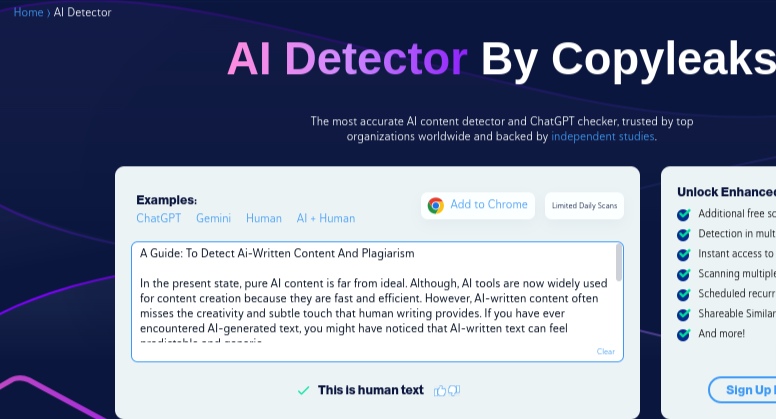
The basic free version of their AI detector is available directly through their website, with no sign-up needed. However, If you want extra features, like support for more languages, faster detection, and quicker processing, you can get those through a subscription.
Originality.ai
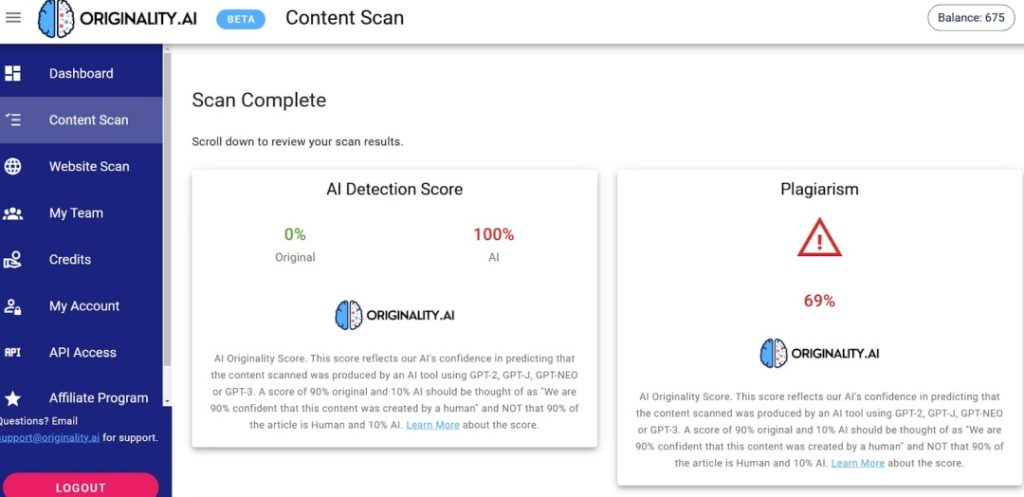
Originality.ai claims to be “the most accurate AI checker” for ChatGPT, and GPT-4, with a reported accuracy of 99% in detecting AI-generated content. It is designed for content creators and SEO professionals who want to ensure their published work is original and free of plagiarism.
This tool does not offer a free or ad-supported version because it uses advanced natural language processing techniques that require much more computing power. Unlike many other AI detection tools, Originality.ai can scan an entire website instead of just a single document, and there’s no limit on the number of characters you can check.
A unique feature of Originality.ai is its ability to detect not just plagiarism but also paraphrased content, which means it can identify if the text has been rewritten rather than copied directly.
Key Takeaways
- AI content detection helps to identify whether a text was written by a human or an AI.
- These tools are not always accurate and may mistake human writing for AI-generated text.
- Recognize the differences in AI-generated content which can help businesses and consumers to avoid misinformation and low-quality information.
- When looking for AI-written text, check for repetitive words, simple sentence structures, and a formal tone.
- AI writers usually don’t share personal experiences and provide generic responses that lack expert insight.

